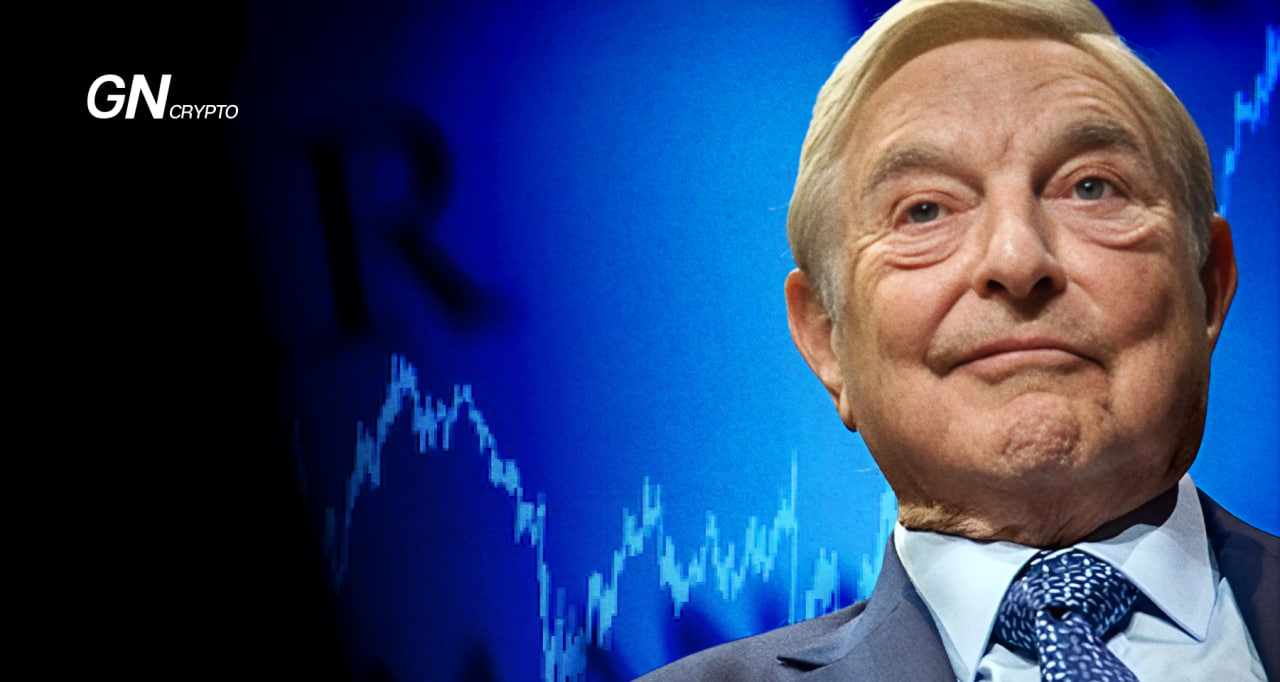George Soros and His Theory of Reflexivity in Financial Markets

The reflexivity theory, developed by legendary investor George Soros, offers an unconventional approach to understanding financial markets. It argues that investors are not merely passive observers driven by market dynamics but active players who influence the reality they engage with through their expectations.
On this page
George Soros is more than just a famous investor and successful trader. He’s a thinker who developed a unique theory about the relationship between markets and human perception. His ideas resonate with those of philosophers like Karl Popper, but instead of being abstract concepts, they offer practical solutions and bold trading strategies.
The essay “The Theory of Reflexivity in Financial Markets,” part of his book Soros on Soros: Staying Ahead of the Curve, presents a fresh perspective on market dynamics. In it, Soros shares personal insights and techniques that have allowed him to anticipate market shifts and profit during economic crises.
Quick fact: Soros’s legendary short position on the British pound in 1992, just before its dramatic collapse (on what is now known as Black Wednesday), earned him billions and solidified his status as a financial icon.
Cover of Soros on Soros. Source: Amazon
Ready to explore?
Let’s start with the fundamental ideas.
What is Reflexivity?
Reflexivity is a creative process in which thought and reality mutually influence one another.
It’s a deeper level of self-awareness than simple reflection. The concept of reflexivity emphasizes that our perceptions shape the world, and in turn, the world shapes our perceptions.
Soros’s theory of reflexivity highlights the strong connection between our beliefs and reality. The idea is that our thoughts can shape events. For example, if an investor believes the market is in an upward trend (a bull market), their actions, driven by this belief, will help push the market in that direction. When enough investors share this view and start buying, the market rises, reinforcing the bullish trend.
This concept is somewhat similar to the popular practice of “visualizing success,” as promoted by Oprah Winfrey and Jim Carrey, which suggests that imagining your goals can help turn abstract desires into real actions. By picturing themselves as already having achieved their goals, people program their minds for success, increase motivation, and find new ways to achieve their objectives—essentially bending reality to their will.
However, Soros isn’t suggesting that traders simply put up a picture of a yellow Lamborghini and meditate on it.
It’s much more complex than that.
Simply believing in success isn’t enough. Source: Medium
Key Concepts of Reflexivity Theory
The fundamental idea of Soros’s theory revolves around the interaction between the subject and the object.
Unlike classical economic theory, which portrays traders and long-term investors as rational individuals making decisions based on objective data, Soros argues that our perception of reality is shaped by our own actions. In other words, our current beliefs about the market influence its actual state.
In simple terms—the market is what we perceive it to be, no more, no less.
Worth noting: This idea echoes Robert Kiyosaki’s Rich Dad, Poor Dad, where he emphasizes that our beliefs about money dictate our financial outcomes. If we think making money is hard, that’s exactly what we’ll experience. In contrast, wealthy people often believe earning money is straightforward, and so it is for them.
The second key concept Soros introduces is the perceptual bias of participants.
Soros contends that humans are inherently irrational. Their decisions are typically based on emotions, intuition, and a wide range of biases. Furthermore, the information investors receive plays a crucial role in shaping their perceptions. The issue is that no matter how objective the information may seem, it is never complete and can be consciously or unconsciously distorted.
Thus, every investor is inherently subjective, and their understanding of the market often leads to inefficient trading behavior.
Read more: How to Avoid Trader Traps: FOMO and FUD
Because of the constant interaction between the subjective perceptions of market participants and the objective reality, markets exist in a state of unstable dynamics and frequent fluctuations. In Soros’s view, the market doesn’t follow objective laws; it is shaped by the subjective expectations of investors.
Soros refers to this phenomenon as a “self-fulfilling prophecy” and uses it to explain the emergence of financial bubbles, market crashes, and other economic anomalies.
George Soros. Source: BBC
How Soros’s Theory Is Proven in Practice
Soros’s theory of reflexivity demonstrates how the subjective expectations of market participants can influence objective reality. Understanding this mechanism allows an observer to identify market bubbles, overheated assets, and potential trend reversals. If a market moves in one direction for too long or too strongly, it can signal a detachment from fundamental factors, making a correction likely.
In Soros’s view, investor belief in a rising market creates a self-reinforcing cycle. When most participants expect prices to rise, they begin buying assets, which indeed pushes prices higher and reinforces their initial expectations. Over time, this mechanism intensifies, creating a snowball effect where investment decisions are driven by the same shared assumptions.
Herding behavior and information asymmetry are key drivers of volatility. When the majority of market participants follow the same strategy, it strengthens the current trend and can lead to the formation of bubbles.
This dynamic is especially pronounced in the cryptocurrency market, where high uncertainty and emotional involvement fuel speculative enthusiasm.
Read more: Crypto vs Forex: What’s the Real Difference for Investors?
The feedback loop between investor beliefs and prices eventually aligns: positive expectations boost demand, which raises prices and further reinforces the belief in continued growth. Conversely, negative sentiment can lead to widespread selling and market crashes.
Information asymmetry also plays a significant role. When participants lack complete or accurate information, they tend to make decisions based on rumors, analyst predictions, or the actions of other investors. This leads to price distortions and heightened volatility.
Group behavior and the influence of large players further compound the issue. When major investors (whales) are affected by reflexivity and begin buying or selling large amounts of assets, it triggers a cascading effect, often resulting in dramatic trend reversals.
Read more: BTC Holders: Whales, Sharks, Crabs, and Shrimps
What Is Soros’s Main Conclusion?
George Soros’s fundamental insight is that investor behavior mirrors emotional swings. Success fosters optimism and excessive confidence, driving investors toward increasingly risky decisions and creating an illusion of invulnerability.
As Soros aptly pointed out, our perception of reality is always distorted: the market, like a temperamental child, can wrap us in euphoria with promises of unprecedented profits, only to later plunge us into despair.
Financial markets have mood swings too. Source: Alamy
After a streak of successful trades, investors often become trapped by their own euphoria, ignoring warning signs. They tend to overestimate their abilities and underestimate risks, which inevitably leads to mistakes. On the other hand, a series of losses can breed doubt and insecurity, paralyzing decision-making.
The history of financial markets is a continuous cycle of booms and busts, where periods of euphoria are inevitably followed by phases of panic. The key for investors is learning to recognize these cycles and act against their emotions.
Successful investors are those who can stay calm during times of widespread optimism and avoid panicking in times of crisis. They understand that the market always seeks balance, and temporary deviations from the norm will eventually correct themselves.
Related: Wall Street Cheat Sheet: Trading Psychology
Phases of the Reflexivity Cycle
Market cycles resemble a mountainous landscape. Source: Linkedin
Here’s a look at a typical financial market cycle through the lens of Soros’s reflexivity theory:
- Background Formation: The market is in a state of uncertainty. Investors are waiting for signals to guide their decisions. This lack of a clear future outlook creates fertile ground for speculation, rumors, and gossip to thrive.
- The Crystal Ball Emerges: After a significant event (such as an interest rate change), investors begin making their own forecasts. These predictions vary widely, reflecting the diverse expectations of market participants. Each investor essentially creates their own “crystal ball,” projecting their beliefs onto the market.
- Market Reflection: Prices start reacting to these expectations. If optimism dominates, the market rises, confirming the bullish sentiment. Conversely, if pessimism takes over, the market falls, validating the bearish outlook.
- Process Acceleration: As the trend becomes more apparent, more investors adapt their strategies to follow it, reinforcing the momentum. This creates a snowball effect—the stronger the trend, the more people join, further fueling its momentum.
- Peak and Reversal: At some point, optimism reaches its peak. Investors begin to ignore risks and believe the market will rise indefinitely. But reality inevitably catches up. The market hits its peak, and the reversal process begins.
- Corrections: Optimism turns to pessimism. Investors start taking profits, while newcomers hesitate to enter the market. The market changes direction sharply, and a downward trend takes hold.
Read more: Market Sentiment: The Fear and Greed Index
How to Apply Soros’s Theory to Financial Decisions
Soros’s main advice is to become aware of your biases and understand how they influence your investment decisions. One way to do this is by studying market history—analyzing past cycles helps reveal the workings of reflexivity.
He also advises staying calm in any situation, avoiding emotional reactions and rash decisions. A key part of his strategy is to look for contradictions. Any conflicting news or different interpretations of the same information can signal that the market is at a turning point, providing an opportunity to go against the tide.
This idea is famously summed up by Warren Buffett: “Be greedy when others are fearful, and fearful when others are greedy.” And this American billionaire certainly knows the markets well.
By understanding reflexivity, investors can approach decision-making more thoughtfully and reduce the risk of losses. However, it’s important to remember that markets are complex and often chaotic systems, and even the best investors make mistakes.
The content on The Coinomist is for informational purposes only and should not be interpreted as financial advice. While we strive to provide accurate and up-to-date information, we do not guarantee the accuracy, completeness, or reliability of any content. Neither we accept liability for any errors or omissions in the information provided or for any financial losses incurred as a result of relying on this information. Actions based on this content are at your own risk. Always do your own research and consult a professional. See our Terms, Privacy Policy, and Disclaimers for more details.






























